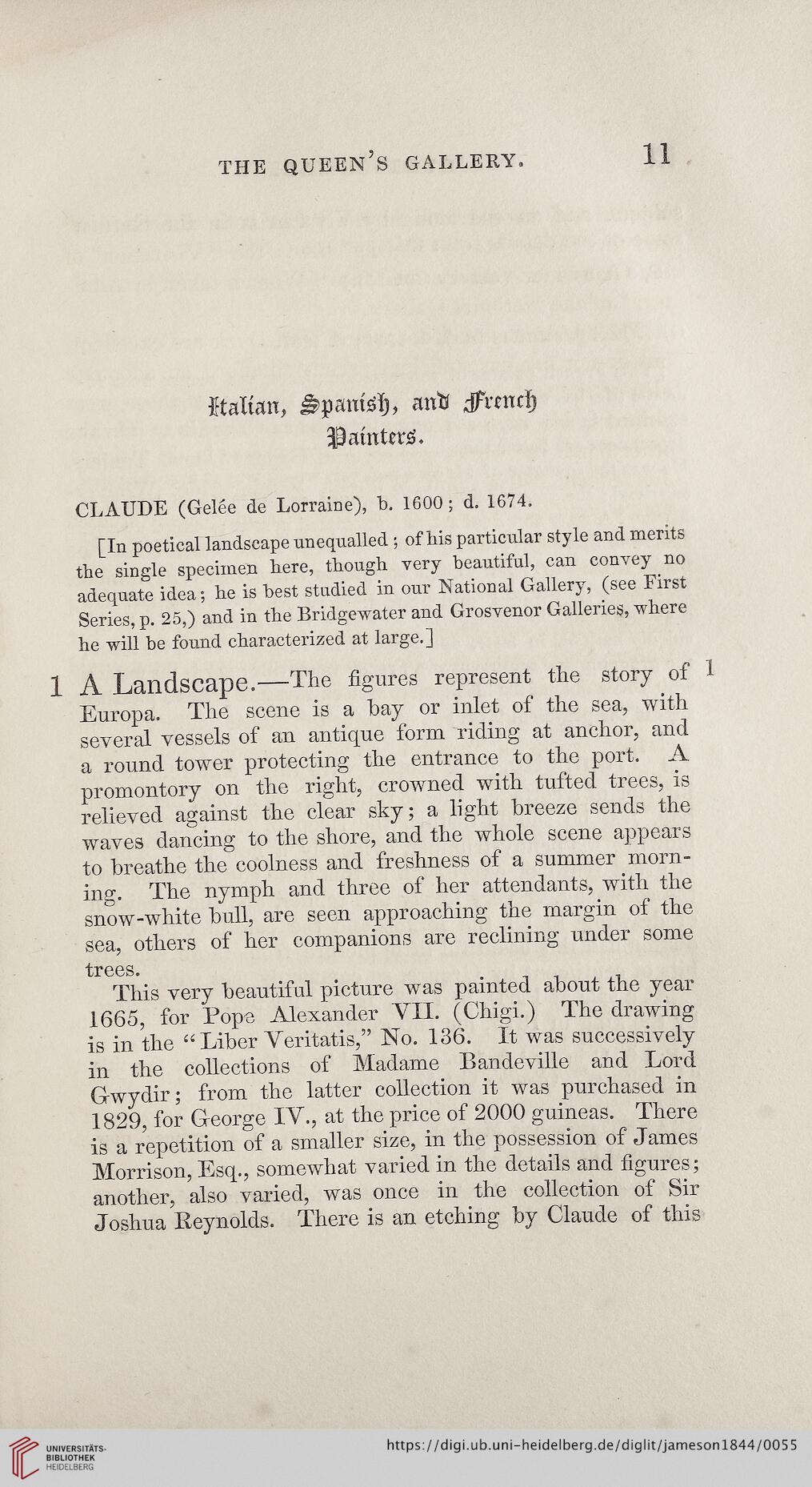THE QUEEN’S GALLERY.
11
Italian, anti dFrtncIj
$ainter£.
CLAUDE (Gelee de Lorraine), b. 1600; d. 1674.
[In poetical landscape unequalled ; of his particular style and merits
the single specimen here, though very beautiful, can convey no
adequate idea; he is best studied in our National Gallery, (see First
Series, p. 25,) and in the Bridgewater and Grosvenor Galleries, where
he will be found characterized at large.]
1 A Landscape.—The figures represent the story of 1
Europa. The scene is a bay or inlet of the sea, with
several vessels of an antique form riding at anchor, and
a round tower protecting the entrance to the port. A
promontory on the right, crowned with tufted trees, is
relieved against the clear sky; a light breeze sends the
waves dancing to the shore, and the whole scene appears
to breathe the coolness and freshness of a summer morn-
ing. The nymph and three of her attendants, with the
snow-white bull, are seen approaching the margin of the
sea, others of her companions are reclining under some
trees.
This very beautiful picture was painted about the year
1665, for Pope Alexander VII. (Chigi.) The drawing
is in the “ Liber Veritatis,” No. 136. It was successively
in the collections of Madame Bandeville and Lord
Gwydir; from the latter collection it was purchased in
1829, for George IV., at the price of 2000 guineas. There
is a repetition of a smaller size, in the possession of James
Morrison, Esq., somewhat varied in the details and figures;
another, also varied, was once in the collection of Sir
Joshua Reynolds. There is an etching by Claude of this
11
Italian, anti dFrtncIj
$ainter£.
CLAUDE (Gelee de Lorraine), b. 1600; d. 1674.
[In poetical landscape unequalled ; of his particular style and merits
the single specimen here, though very beautiful, can convey no
adequate idea; he is best studied in our National Gallery, (see First
Series, p. 25,) and in the Bridgewater and Grosvenor Galleries, where
he will be found characterized at large.]
1 A Landscape.—The figures represent the story of 1
Europa. The scene is a bay or inlet of the sea, with
several vessels of an antique form riding at anchor, and
a round tower protecting the entrance to the port. A
promontory on the right, crowned with tufted trees, is
relieved against the clear sky; a light breeze sends the
waves dancing to the shore, and the whole scene appears
to breathe the coolness and freshness of a summer morn-
ing. The nymph and three of her attendants, with the
snow-white bull, are seen approaching the margin of the
sea, others of her companions are reclining under some
trees.
This very beautiful picture was painted about the year
1665, for Pope Alexander VII. (Chigi.) The drawing
is in the “ Liber Veritatis,” No. 136. It was successively
in the collections of Madame Bandeville and Lord
Gwydir; from the latter collection it was purchased in
1829, for George IV., at the price of 2000 guineas. There
is a repetition of a smaller size, in the possession of James
Morrison, Esq., somewhat varied in the details and figures;
another, also varied, was once in the collection of Sir
Joshua Reynolds. There is an etching by Claude of this




